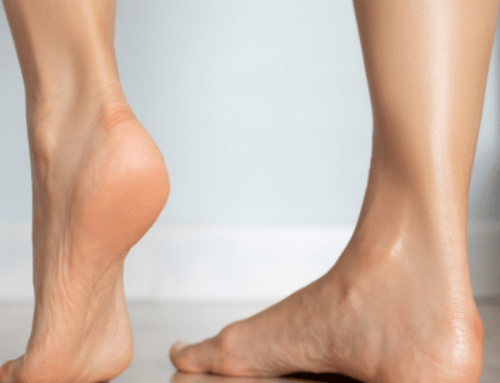 Plantar fasciitis, the most frequently diagnosed cause of heel pain, is the medical term for irritation or inflammation of the plantar fascia, the band or sheath of collagen fibers that runs from the heel of the foot to the toe area, providing support and helping maintain the weight bearing arch of the foot while incidentally providing something of a cushion to the sole of the foot as well.
Plantar fasciitis, the most frequently diagnosed cause of heel pain, is the medical term for irritation or inflammation of the plantar fascia, the band or sheath of collagen fibers that runs from the heel of the foot to the toe area, providing support and helping maintain the weight bearing arch of the foot while incidentally providing something of a cushion to the sole of the foot as well.
Collagen is the most common protein the body manufactures and it is also the main structural protein in such connective tissues as fascia, ligaments, tendons and cartilage. Sustained strain and repetitive shocks can cause micro-tears or larger tears to the plantar fascia band. If this occurs frequently or over a prolonged period, damage to the can outpace the ability of the tissue to rebuild and repair itself, resulting in irritation and inflammation.
What Causes Plantar Fasciitis?
All sorts of lifestyles can make people susceptible to the pain and inflammation of plantar fasciitis. Athletes, especially track and field athletes and runners, are susceptible to what is known in the vernacular as “Jogger’s Heel”. In such cases, the repeated impact on the balls of the feet of runners that bends the foot and stretches the fascia to its limits causes the small tears mentioned above.
- The reluctance of committed runners to take time off to let the fascia heal can exacerbate the condition and turn normal wear and tear into a larger problem. Indeed, some runners will “push through the pain” only to repeat the insult the next time they exercise, further damaging existing tears, re-tearing healing areas and possibly starting new ones.
- Sedentary people who’ve gained weight beyond what their feet are designed to handle are at risk as well, and not just because of the extra pounds, but because their plantar fascia has lost its flexibility through inactivity. Others who are similarly overweight but who are actively on their feet throughout the day are not at the same risk.
- For similar reasons, plantar fasciitis can present a problem during pregnancy. It tends to develop particularly during the late stages because of the increase in weight on the feet and sometimes an accompanying decrease in activity.
- One popular belief is that that poor quality footwear can cause plantar fasciitis. In fact, shoes without proper arch support or soles that are too soft are often found to be the cause of this painful condition. If this is the case, a podiatrist may recommend footwear that is better designed to protect the foot. This can remedy the problem.
- In some cases, heel spurs, which are deposits of calcium on the bottom of the heel, are the cause of plantar fasciitis. This occurs when the spurs direct rub against the plantar fascia tissue, causing irritation. Heel spurs are implicated in only a small percentage of patients who develop plantar fasciitis. Many people with heel spurs experience no pain at all. However, heel spurs are caused by many of the same activities responsible for tear injuries to the plantar fascia, especially sports that involve running and jumping.
The possible causes of heel pain and other symptoms of plantar fasciitis are numerous. The heel pain a person experiences may have another etiology. The surest and quickest means of detecting the true cause of heel pain and diagnosing a possible case of plantar fasciitis is by a visit to an experienced podiatrist who may be able to determine the cause and extent of the damage, and who can then direct the patient to the most effective treatment.






